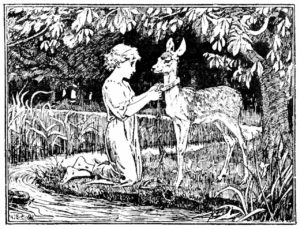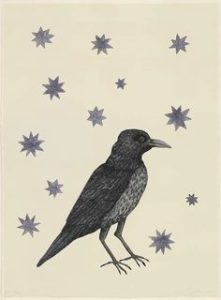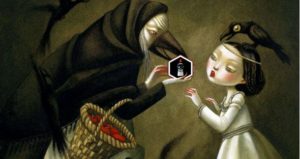 Fairy Tales are both completely familiar and mysteriously alien. Most of us grow up hearing the stories of Little Red Riding Hood, Sleeping Beauty, Beauty and the Beast and there are many films and TV shows which can capitalized on our love of these stories. While we tend to relegate them to “children’s literature” these stories were originally told within the family circle as entertainment for all ages or written down in versions which clearly were intended for adults, not kids.
Fairy Tales are both completely familiar and mysteriously alien. Most of us grow up hearing the stories of Little Red Riding Hood, Sleeping Beauty, Beauty and the Beast and there are many films and TV shows which can capitalized on our love of these stories. While we tend to relegate them to “children’s literature” these stories were originally told within the family circle as entertainment for all ages or written down in versions which clearly were intended for adults, not kids.
One of the most important goals of education is to encourage us to question, examine,  reflect on what seems obvious but as we explore it carefully, not so much. Education is essentially regaining our childhood talent at questioning for meaning. This site is connected to a freshman seminar course at St. Joseph’s University in New York where first year college students will share in a collaborative adventure in inquiry. In exploring fairy tales and their interpretations we will range through psychology, history, sociology, philosophy, literature, and education. Join us as our website develops over the next couple of months.
reflect on what seems obvious but as we explore it carefully, not so much. Education is essentially regaining our childhood talent at questioning for meaning. This site is connected to a freshman seminar course at St. Joseph’s University in New York where first year college students will share in a collaborative adventure in inquiry. In exploring fairy tales and their interpretations we will range through psychology, history, sociology, philosophy, literature, and education. Join us as our website develops over the next couple of months.
Dr. W. C. Turgeon
June 2025
 We all recall the fairy tales that entranced us when we were young… and maybe still do. Before they were called “fairy tales,” they were folk tales. Where do fairy tales come from? What makes a story a “fairy tale?” How are they related to myths, if they are?
We all recall the fairy tales that entranced us when we were young… and maybe still do. Before they were called “fairy tales,” they were folk tales. Where do fairy tales come from? What makes a story a “fairy tale?” How are they related to myths, if they are?
 Fairy Tales are both completely familiar and mysteriously alien. Most of us grow up hearing the stories of Little Red Riding Hood, Sleeping Beauty, Beauty and the Beast and there are many films and TV shows which can capitalized on our love of these stories. While we tend to relegate them to “children’s literature” these stories were originally told within the family circle as entertainment for all ages or written down in versions which clearly were intended for adults, not kids.
Fairy Tales are both completely familiar and mysteriously alien. Most of us grow up hearing the stories of Little Red Riding Hood, Sleeping Beauty, Beauty and the Beast and there are many films and TV shows which can capitalized on our love of these stories. While we tend to relegate them to “children’s literature” these stories were originally told within the family circle as entertainment for all ages or written down in versions which clearly were intended for adults, not kids. reflect on what seems obvious but as we explore it carefully, not so much. Education is essentially regaining our childhood talent at questioning for meaning. This site is connected to a freshman seminar course at St. Joseph’s University in New York where first year college students will share in a collaborative adventure in inquiry. In exploring fairy tales and their interpretations we will range through psychology, history, sociology, philosophy, literature, and education. Join us as our website develops over the next couple of months.
reflect on what seems obvious but as we explore it carefully, not so much. Education is essentially regaining our childhood talent at questioning for meaning. This site is connected to a freshman seminar course at St. Joseph’s University in New York where first year college students will share in a collaborative adventure in inquiry. In exploring fairy tales and their interpretations we will range through psychology, history, sociology, philosophy, literature, and education. Join us as our website develops over the next couple of months.